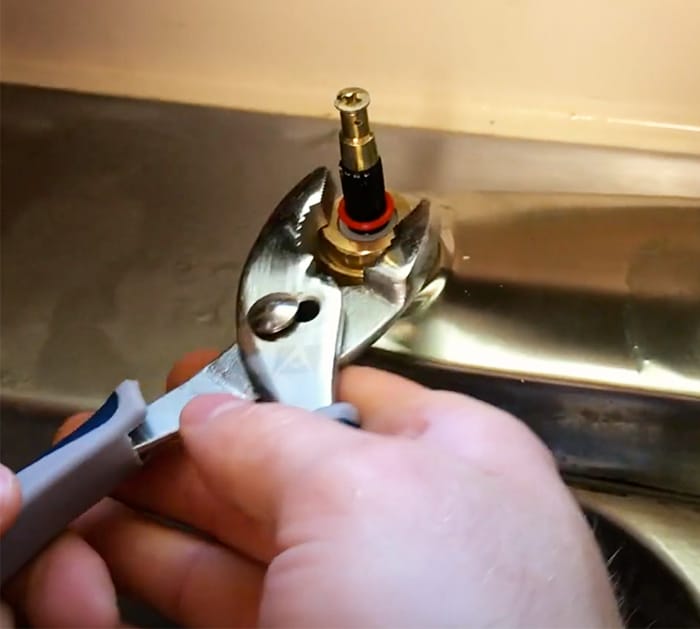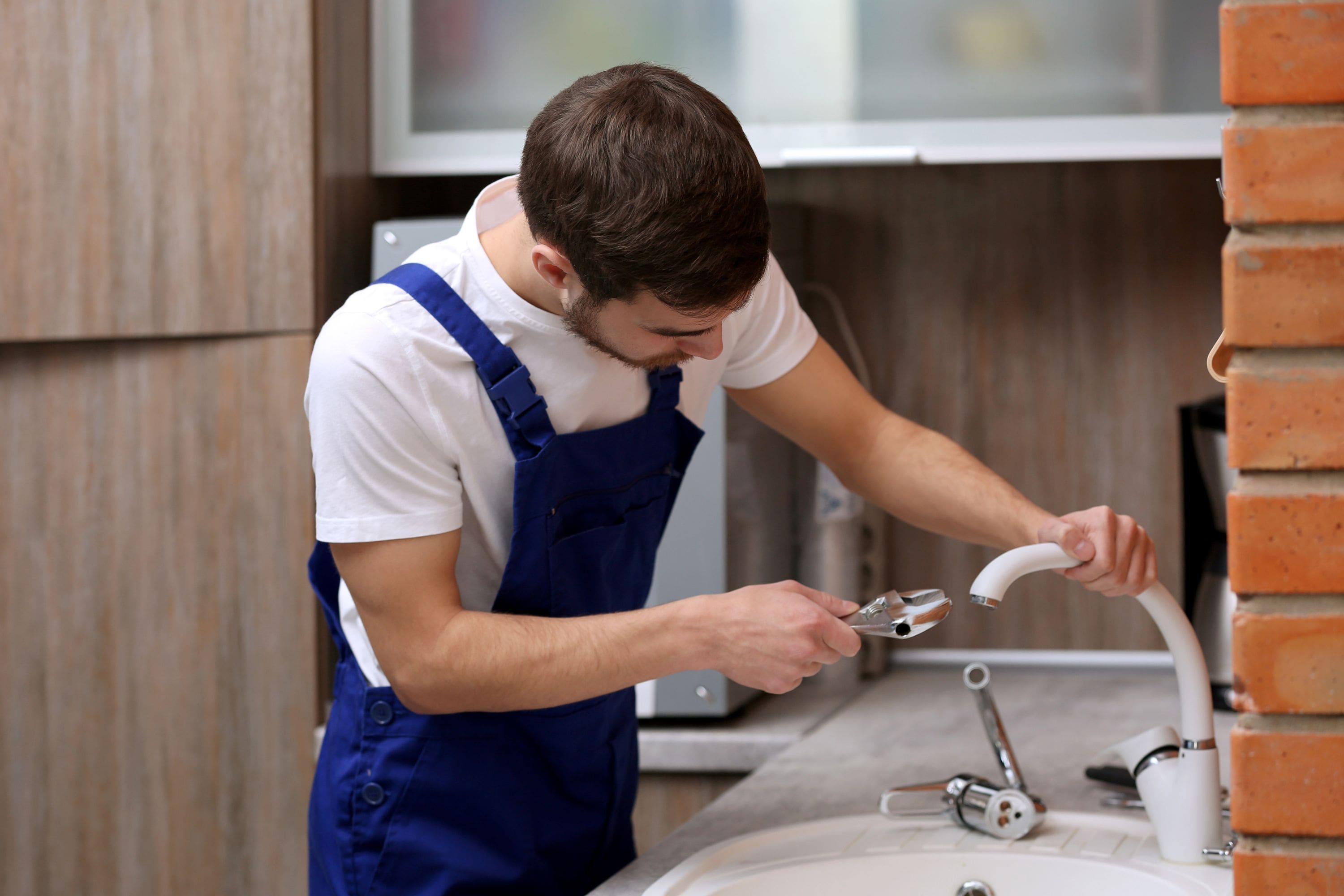Exploring the Value of Resolving a Broken Faucet
Exploring the Value of Resolving a Broken Faucet
Blog Article
What are your thoughts concerning 4 Common Reasons for a Leaky Faucet?

Trickling faucets could feel like a small trouble, yet their impact exceeds simply the nuisance of the audio. From drainage to sustaining unneeded financial expenses and wellness threats, ignoring a dripping faucet can result in numerous effects. In this article, we'll delve into why it's important to address this typical family problem immediately and successfully.
Wastefulness of Water
Environmental Effect
Leaking taps add substantially to water wastefulness. According to the Epa (EPA), a solitary tap leaking at one drip per secondly can lose more than 3,000 gallons of water annually. This not just stress water resources however also influences ecological communities and wildlife depending on them.
Financial Prices
Enhanced Water Costs
Beyond the environmental effect, leaking taps can pump up water costs substantially. The built up waste gradually converts right into higher energy expenditures, which could have been prevented with timely repairs.
Possible Residential Or Commercial Property Damage
In addition, extended leaking can lead to harm to components and surfaces bordering the faucet. Water buildup can trigger staining, deterioration, and even structural concerns if left ignored, resulting in added repair work costs.
Wellness Issues
Mold And Mildew and Mildew Development
The constant visibility of wetness from a dripping tap creates an ideal atmosphere for mold and mildew development. These fungis not only compromise interior air top quality however additionally position health dangers, particularly for people with respiratory system problems or allergic reactions.
Waterborne Illness
Stagnant water in trickling faucets can become a breeding place for bacteria and various other microorganisms, boosting the danger of waterborne conditions. Pollutants such as Legionella germs thrive in stagnant water, potentially resulting in serious health problems when ingested or breathed in.
DIY vs. Specialist Repair service
Advantages and disadvantages of Do It Yourself Fixing
While some might try to repair a dripping faucet themselves, do it yourself repair work feature their own collection of obstacles. Without correct knowledge and tools, DIY efforts can exacerbate the concern or cause insufficient repairs, extending the issue.
Advantages of Hiring a Professional Plumber
Employing an expert plumber makes certain that the underlying cause of the leaking tap is dealt with successfully. Plumbers possess the know-how and tools to detect and fix tap concerns efficiently, saving time and minimizing the risk of further damage.
Step-by-Step Overview to Dealing With a Dripping Faucet
Devices Needed
Prior to trying to deal with a trickling tap, collect the needed devices, including an adjustable wrench, screwdrivers, replacement parts (such as washers or cartridges), and plumber's tape.
Usual Tap Issues and Their Solutions
Recognize the kind of tap and the particular problem causing the drip. Common issues consist of damaged washing machines, corroded shutoff seats, or malfunctioning O-rings. Describe producer instructions or on-line tutorials for detailed assistance on repair services.
Preventive Measures
Regular Maintenance Tips
To stop trickling faucets, perform regular upkeep such as cleaning up aerators, examining for leaks, and changing damaged parts promptly. In addition, take into consideration setting up water-saving devices or updating to much more efficient components.
Value of Prompt Repair Works
Dealing with trickling taps as soon as they're seen stops further water wastefulness and prospective damage, eventually saving both water and cash over time.
Impact on Property Worth
Perception of Well-Maintained Building
Preserving a home in good condition, including attending to maintenance problems like dripping faucets, enhances its regarded value and worth among possible purchasers or renters.
Influence on Resale Worth
Features with well-kept plumbing components, including taps, command greater resale values in the property market. Dealing with trickling faucets can add to a favorable perception throughout residential or commercial property examinations and negotiations.
Ecological Responsibility
Specific Contribution to Preservation
Taking duty for repairing leaking taps aligns with wider initiatives towards water conservation and environmental sustainability. Every person's activities jointly make a significant impact on maintaining precious sources.
Lasting Living Practices
By focusing on prompt repair services and taking on water-saving habits, individuals add to lasting living techniques that benefit both present and future generations.
Verdict
Addressing a dripping faucet exceeds simple ease; it's an essential step toward saving water, minimizing economic prices, and safeguarding health and residential or commercial property. Whether via DIY repairs or professional support, acting to take care of leaking taps is a little yet impactful method to promote accountable stewardship of resources and contribute to a much healthier, more lasting future.
How to Fix a Dripping or Leaky Faucet
A leaking faucet is one of the most common problems that homeowners encounter, but it being commonplace doesn’t make it any less annoying. The constant drip drip drip of a leaking bathtub faucet, showerhead, or sink tap can disturb your home’s serenity. Left neglected, a dripping faucet can also result in higher water bills and discoloration or mold growth in your sink or plumbing fixtures.
Fortunately, you don’t have to be a trained plumber to know how to stop a dripping faucet. With some basic tools, replacement parts, and a little patience, leaky faucet repair is a breeze. In this article, we’ll explain what causes dripping faucets and how you can fix them.
What Causes a Leaking Faucet?
Kitchen and bathroom faucets come in all manner of designs, but most involve some combination of valves, O-rings, seals, and washers. The O-ring is usually the weakest link, but any one of these pieces can wear down over time. Heat, moisture, temperature fluctuations, minerals, mold, and movement can contribute to warping and corrosion, breaking the watertight seal. This just comes with the territory of being a homeowner. Everything is always subject to wear and tear, and some component parts of your appliances and fixtures need to be replaced on occasion. At least replacement O-rings are cheap!
More rarely, dripping faucets can be a symptom of excessively high water pressure. Were this the case in your home, you would probably notice that the leak is not isolated to one faucet. Water pressure issues are harder to resolve on your own. We recommend contacting a professional plumber if you suspect your water pressure is too high.
How to Fix a Dripping Faucet
Pipe wrench or monkey wrench Allen wrench set Screwdrivers Old towel or rag Shut off the water.
Before you do anything, you need to turn off the water to keep from drenching your kitchen or bathroom. You should find a valve under the sink and against the wall. Once you’ve turned this valve, try turning the faucet on to confirm that the water source has been cut off.
If you can’t locate your local valve for the faucet you’re working on, you can always shut off the water to the house at the main valve. Of course, this will prohibit anyone from using the sinks, showers, or toilets while you’re working on the faucet that’s giving you trouble.
Plug or block the drain.
You’ll be disassembling the faucet and removing some small bits of hardware. Plug the drain with a stopper or rag to avoid the possibility of a small screw falling into your P-trap.
Take apart the faucet assembly.
There are several varieties of kitchen and bathroom faucets, each with its own manner of assembly. For detailed instructions on how to disassemble your faucet, you can refer to the fixture’s manual or contact the manufacturer. If you know whether you have a ball, disc, cartridge, or compression faucet, you can find detailed schematics online.
In general, you need to begin by removing the faucet handles. You might notice a small screw that you’ll need to remove with a screwdriver or Allen wrench. If you don’t see any visible securing hardware, it’s likely hidden under a decorative cap that can be unscrewed or popped off with flathead screwdriver.
Remove each piece methodically, consulting a schematic when necessary. Take notes or arrange the pieces in such a way to make it easier to correctly reassemble the faucet later.
Remove the cartridge.
Once you’ve removed the handles and securing hardware, you should be able to remove the valve cartridge or stem. Some cartridges will slide right out. Other faucet models will require you to loosen a nut with a pipe wrench before you can remove the valve stem.
Examine the exposed hardware.
With the cartridge or stem removed, inspect the component parts. Check the rubber O-rings for wear and tear. Also examine the seat washer for corrosion or other damage. These pieces are usually the responsible parties for a dripping faucet, but it’s worth inspecting the other component parts while you have the faucet disassembled.
Find replacement parts.
Once you’ve identified which faucet component has failed, find an identical replacement. Your local hardware store should have O-rings, seat washers, and other standard components in stock. If you have a luxury or uncommon faucet, you may have to contact the manufacturer for a replacement part.
It’s a good idea to take your old parts with you to the hardware store so you can compare them with the store’s inventory and be sure you’re purchasing the correct replacement.
Reassemble the faucet.
With your new parts in hand, reconstruct the faucet and handles. Don’t be tempted to overtighten screws or nuts. You might think this could create a better seal, but it can instead damage or bend a delicate part of the assembly and create a new problem for you.
Turn on the water and test the faucet.
The only thing left to do is test your work. Unplug the sink, turn the water back on, and try the faucet. Congratulate yourself on a job well done!
https://www.libertyhomeguard.com/how-to-fix-a-dripping-or-leaky-faucet/

As an avid person who reads about Should I Repair or Replace a Leaky Faucet?, I assumed sharing that piece of content was worth the trouble. Do you know about another person who is inquisitive about the niche? Take a moment to promote it. I love your readership.
Report this page